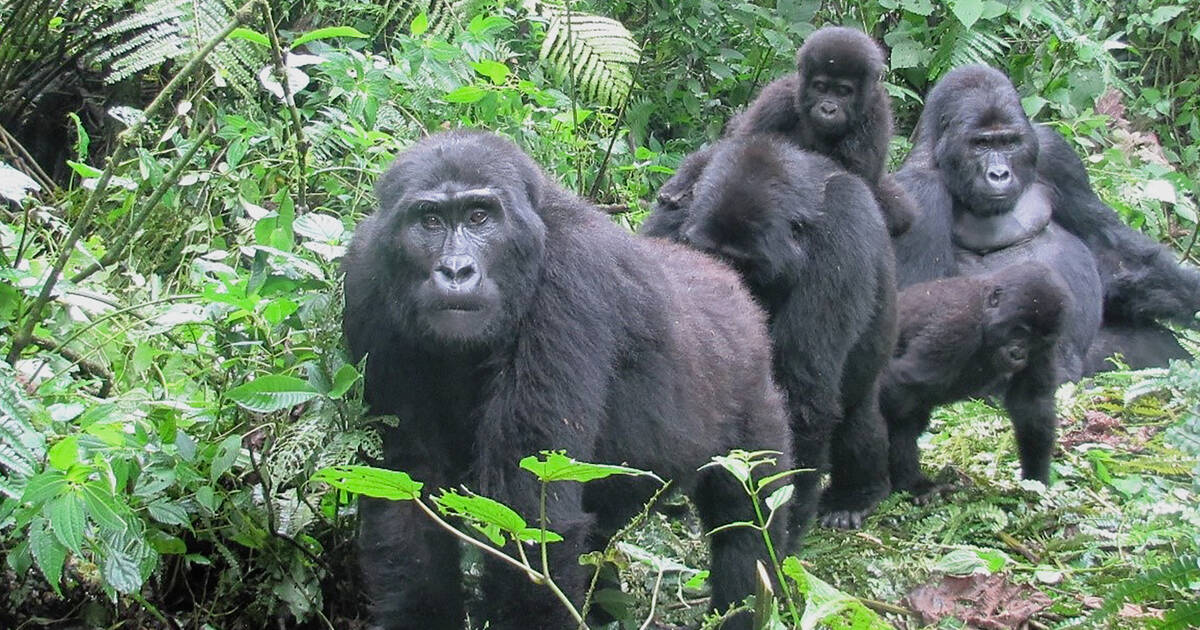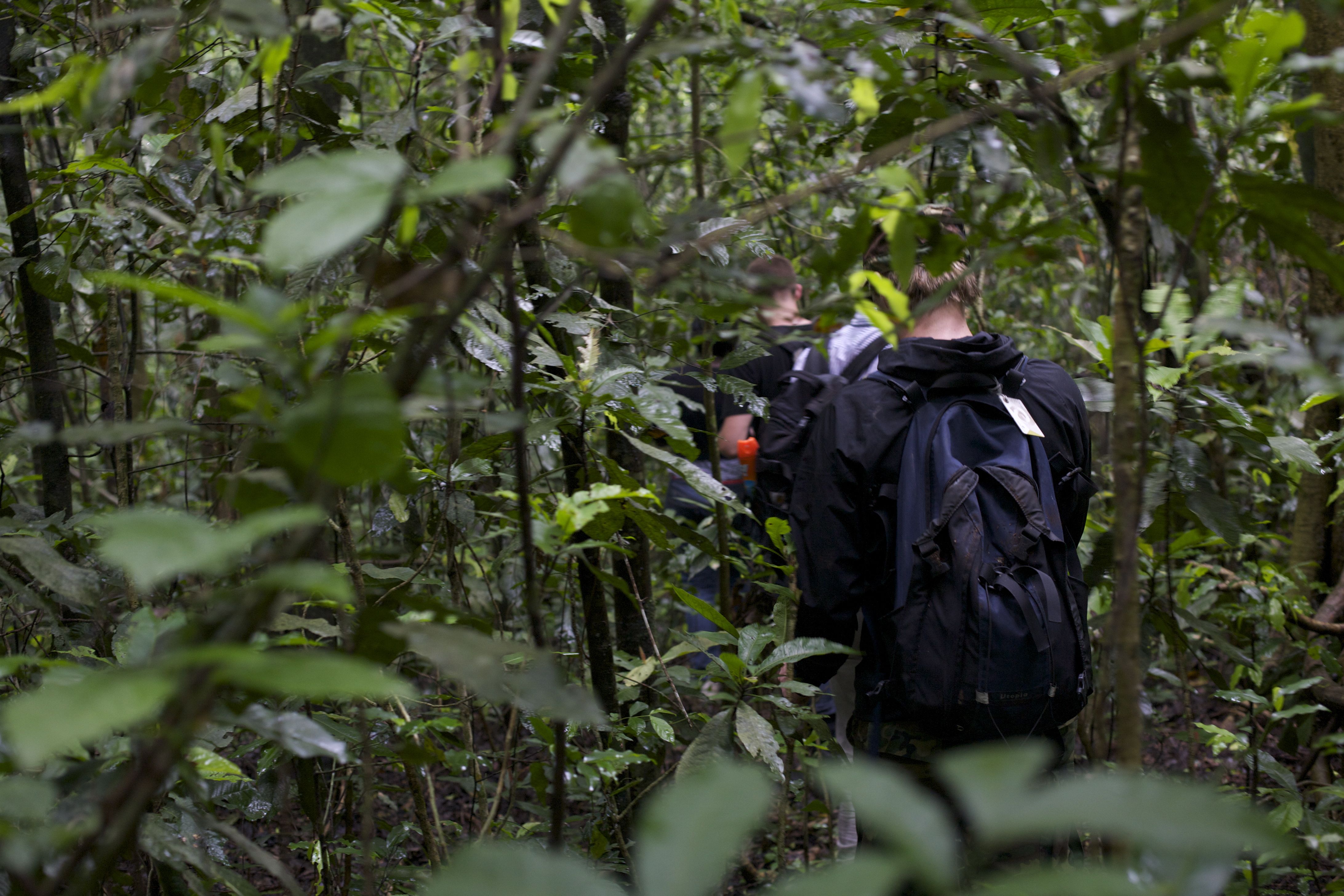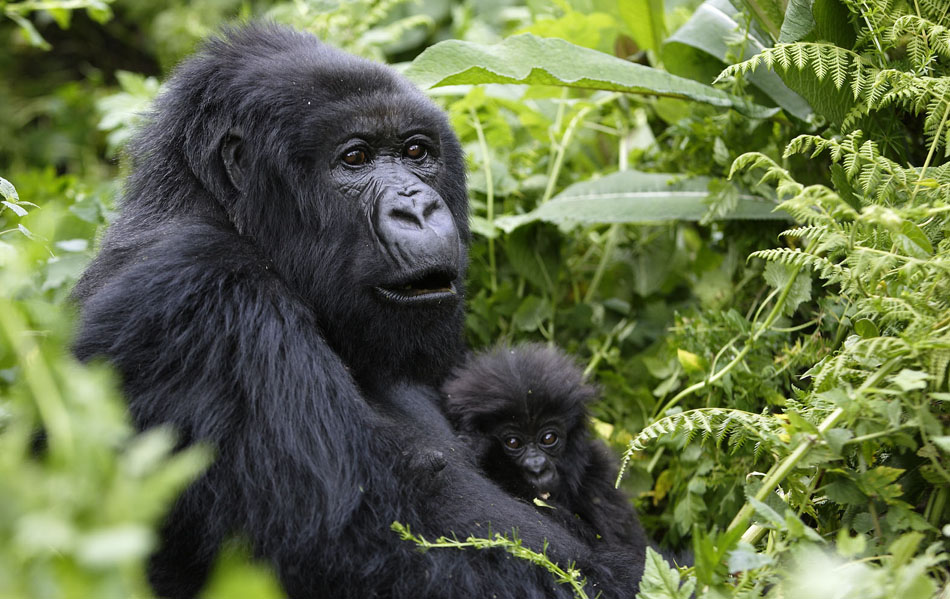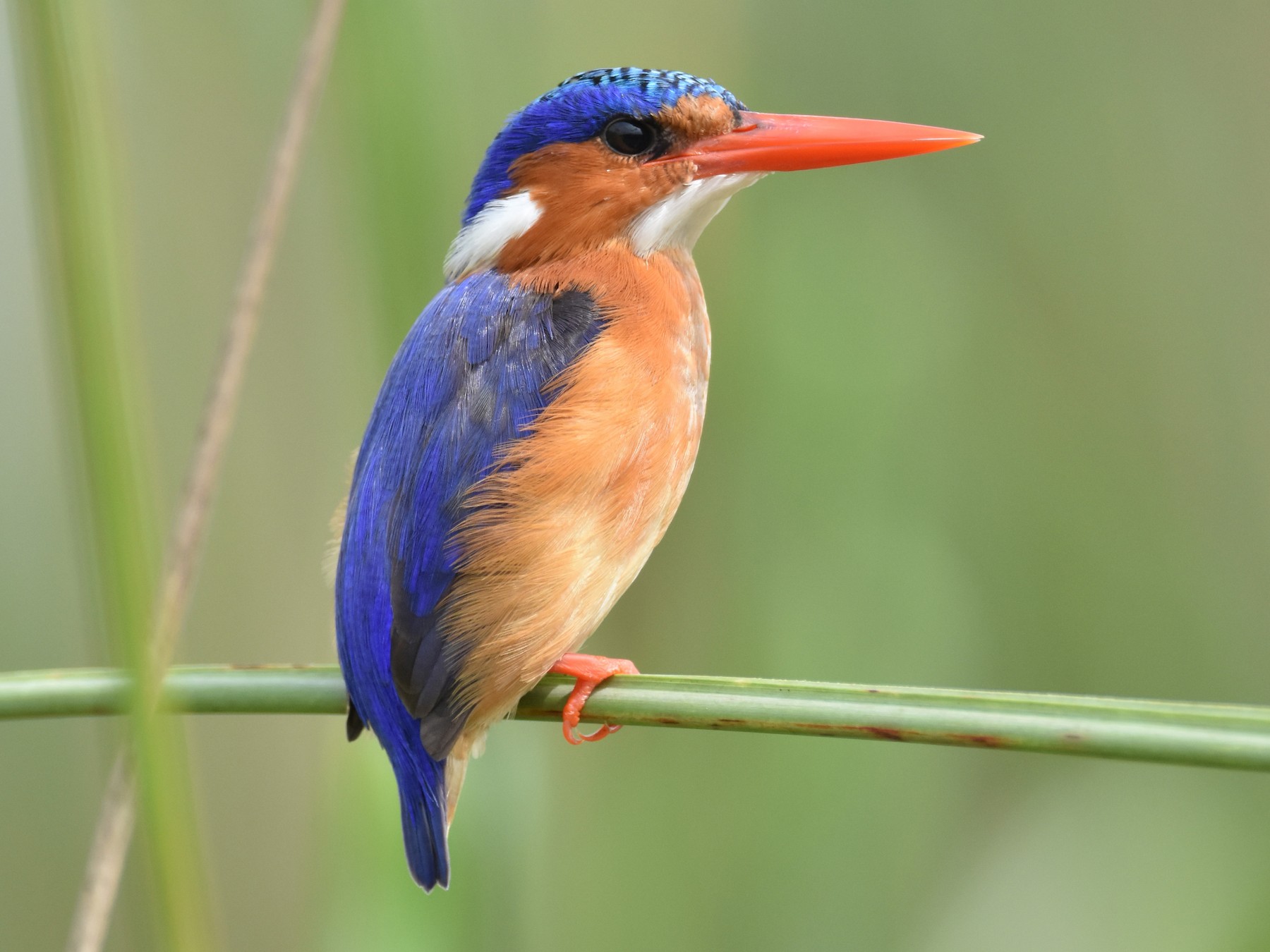
How Do Mountain Gorillas Move?
How Do Mountain Gorillas Move?
Do you know how mountain gorillas move? Probably yes or no, but we bring you the details on what these Giant Apes’ locomotion looks like. Like the chimpanzees- our closest relatives in the animal kingdom, mountain gorillas normally move on all four limbs, using knuckles. This is known as “Knuckle walking”. These Great Apes, living in the Virunga Conservation Area (Mgahinga Gorilla National Park in Uganda, Volcanoes National Park in Rwanda, and Virunga National Park in the Democratic Republic of Congo) as well as Bwindi Impenetrable National Park knuckle-walk for most (95%) of the time. Walking on the knuckles is not only fundamental for locomotion on the ground but also for other actions.
Mountain gorillas’ forelimbs are also used for the manipulation of food and in other primates (especially chimpanzees), the forelimbs are also used for climbing trees, in addition to manipulation of food. Besides knuckle-walking, mountain gorillas walk with other parts of their hands such as fist-walking, walking with the backs of their hands, or even palms.
Sometimes these Giant Apes rear up to move on their two hind legs, but this happens for short distances like when carrying food, in defensive situations, and displaying- chest-beating, and stumping feet. When mountain gorillas walk on their hind legs, their knees and trunk are usually bent while in humans, the upper body remains vertical and at some point of locomotion, their legs make one line with the axis.
Anthropologists once believe that chimpanzees and humans’ common ancestor once used knuckle-walking, although the latter later evolved to engage in upright walking from knuckle-walking. This led to the discovery that Ardipithecus ramidus, a human-like hominid actually came from the same ancestor as humans and chimpanzees. These Hominids used upright walking and not knuckle-walking, hence leading to the conclusion that Chimpanzees adopted knuckle-walking after splitting from humans many years ago. This makes it clear that knuckle-walking was developed independently in the African Great Apes.
However, other studies believe that the difference in knuckle-walking between chimpanzees and mountain gorillas is because of the difference in the biomechanics of weight-bearing, kinematics, and positional behavior. Besides mountain gorillas, other primates that engage in knuckle-walking are Olive baboons, and fossils related to Australopithecus afarensis and Australopithecus anamensis had specialized wrist shape that was absorbed from an earlier knuckling-walking ancestor.
How do mountain gorillas climb trees?
While knuckle-walking is possible during ground locomotion, it isn’t possible while climbing or when in trees. These creatures move on all fours when in trees and on rare occasions they move with their front limbs while swinging from one branch to the other, although it is rare for them to jump from branch to branch. If mountain gorillas climb up small and weak tree trunks, they make use of their hands and feet to surround the trunk while supporting their big toes. When it comes to large trunks, mountain gorillas surround them with their long arms and lift themselves up with their feet.
Where mountain gorillas are found
Mountain gorillas live in the densely forested hilly slopes of south-western Uganda (in Bwindi Impenetrable and Mgahinga Gorilla National Parks), North-western Rwanda (Volcanoes National Park), and Eastern Democratic Republic of Congo (Volcanoes National Park). There are more than 1063 individuals in these Parks, with a total of over 40 habituated gorilla families (20 families in Uganda, 12 habituated families in Rwanda, and 8 gorilla groups in the Democratic Republic of Congo). Each of these families is visited by a maximum of 8 visitors. With a gorilla permit of $1500 per person, $700 per person, and $450 per person, travelers have access to any of the gorilla families in Rwanda, Uganda, and Congo respectively.





